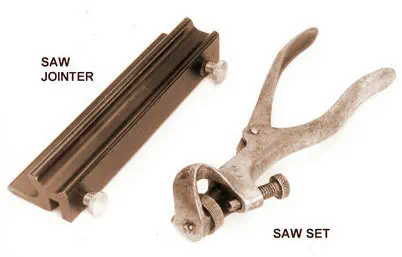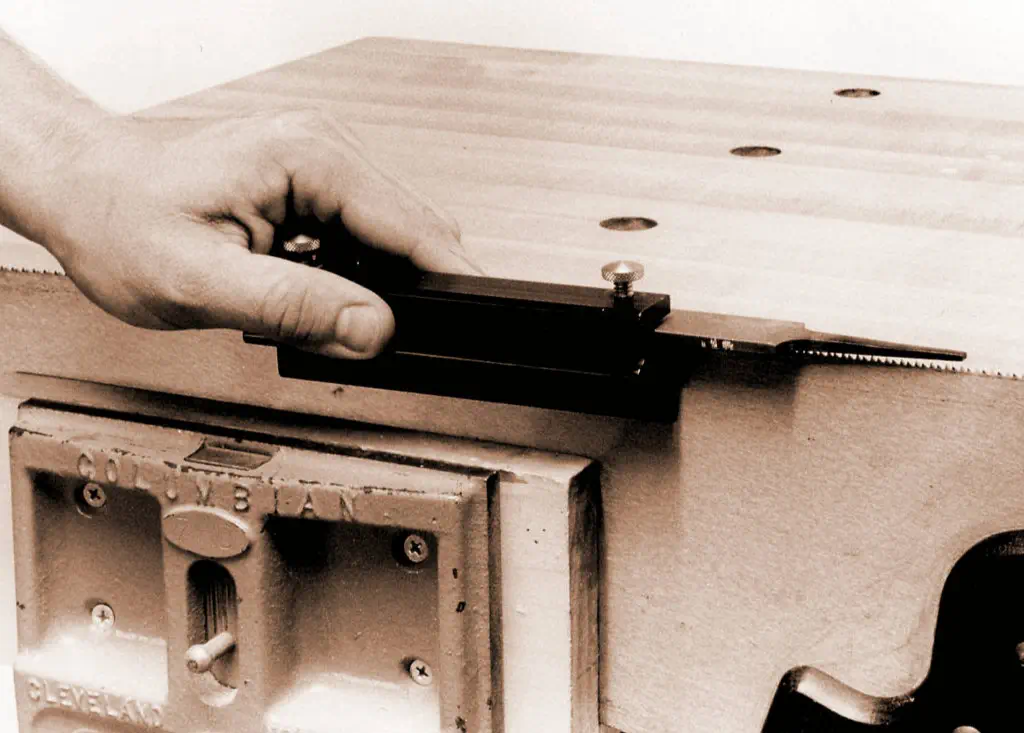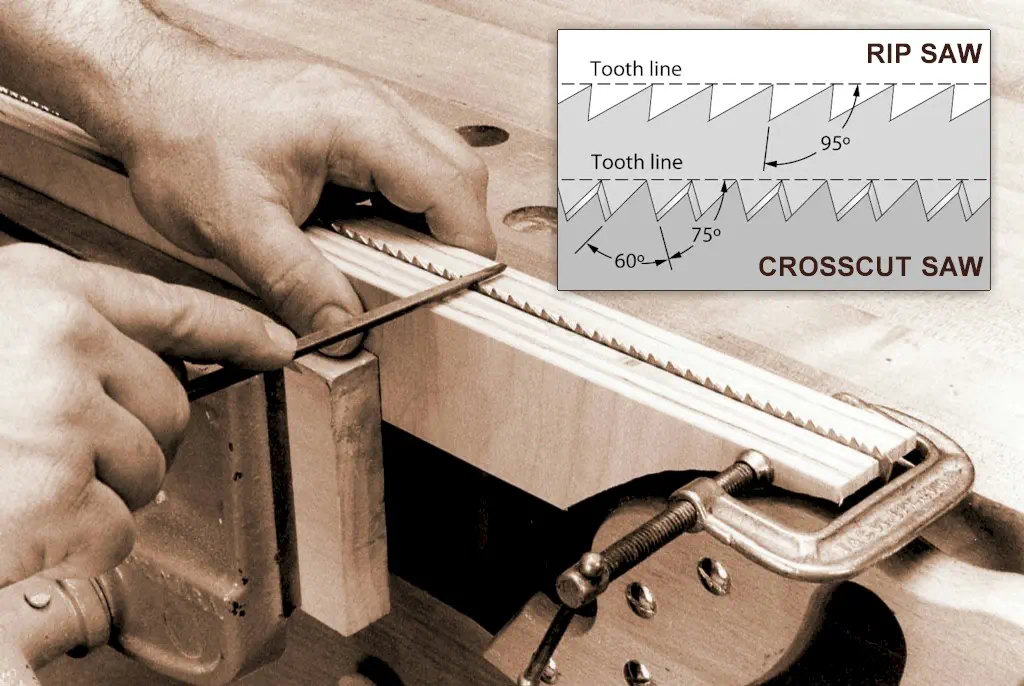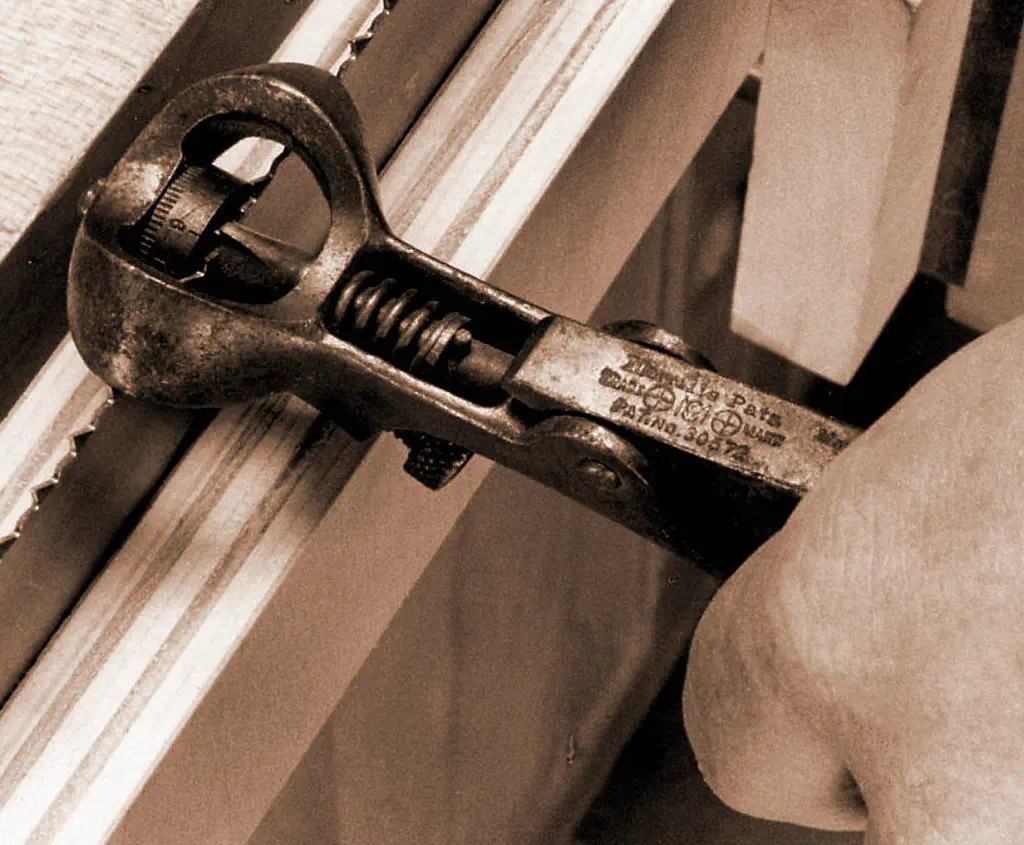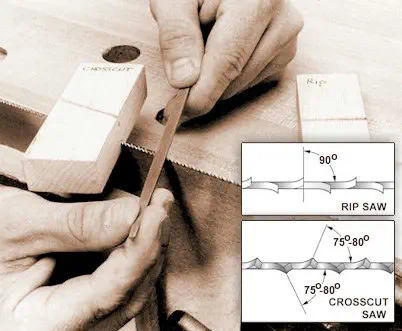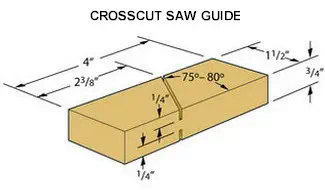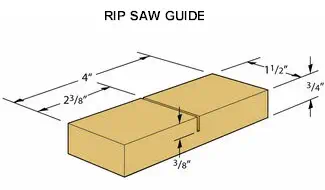The teeth of handsaws are sharpened with files. You need a mill file to joint the teeth at the same height, and a three-square (triangular) file to sharpen the edges. Additionally, you’ll need a saw jointer to hold the mill file and a saw set to set (bend) the teeth.
If the teeth are extremely worn or damaged, joint them flat and even with a mill file. Then re-cut or shape the teeth with a three-square file. Set the reshaped teeth alternately left and right, then sharpen them with a triangular file.


